With the election coming up in November and the COVID-19 pandemic causing disruptions, many groups and commmunities are increasing their focus on vote-by-mail options. While that increased focus is justified, that action alone is insufficient to protect the right to vote in the 2020 elections. Failure to ensure safe, accessible in-person voting risks further disenfranchising many Americans, especially those in marginalized groups. We believe that the expansion of voting by mail must be coupled with resources to address local operational gaps that will make voting in person increasingly difficult.
Due in large part to COVID 19, our election system is facing a critical shortage of poll workers to staff the polls in 2020. Recruiting poll workers, who work to ensure the in-person voting process operates safely and efficiently, is challenging even in normal times. Today, COVID-19 has exacerbated the difficulties typically associated with poll worker recruitment: a large proportion of poll workers tend to be senior citizens, a vulnerable population during this pandemic that will, with good reason, likely refrain from working the polls in November.
To address this issue, Carnegie Mellon University, in collaboration with the Voter Protection Corps, developed a “voting risk assessment” tool by collecting and analyzing public data to determine which counties in eight key states (Arizona, Florida, Michigan, North Carolina, Ohio, Pennsylvania, Texas, and Wisconsin) will need the most support in recruiting poll workers to ensure the right to vote. Though thorough poll worker recruitment will require a large-scale intervention from many organizations and governments across the country in this election, our tool analysis enables organizations to understand:
We provide a detailed explanation for each of the views included in the toolkit here: User Guide. Additionally, we provide some screenshots of how each of the pages look below. A detailed explanation of how this toolkit is provided in the detailed report.
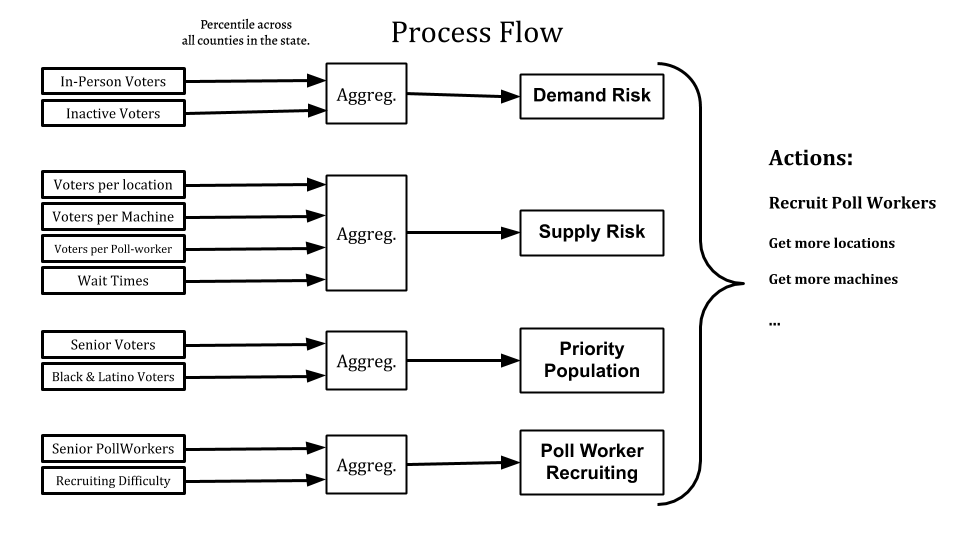
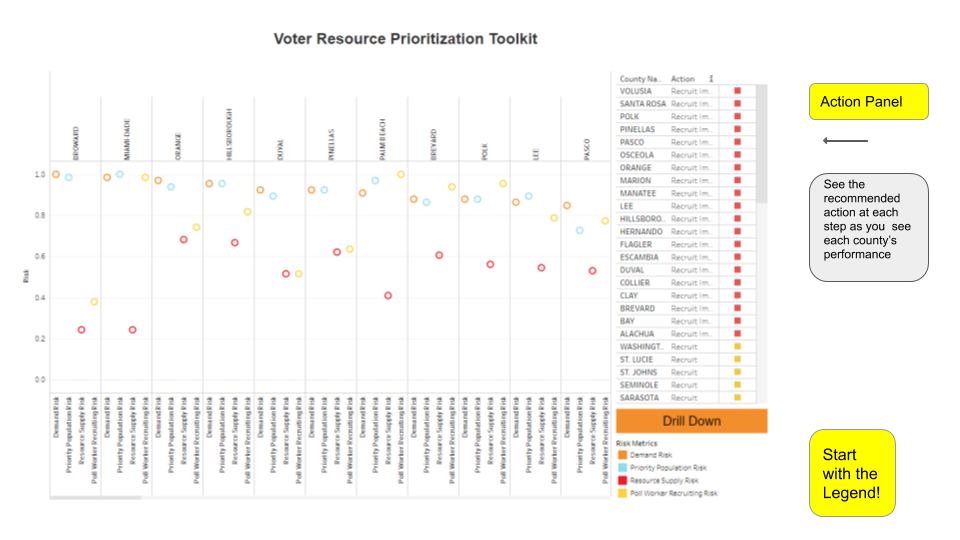
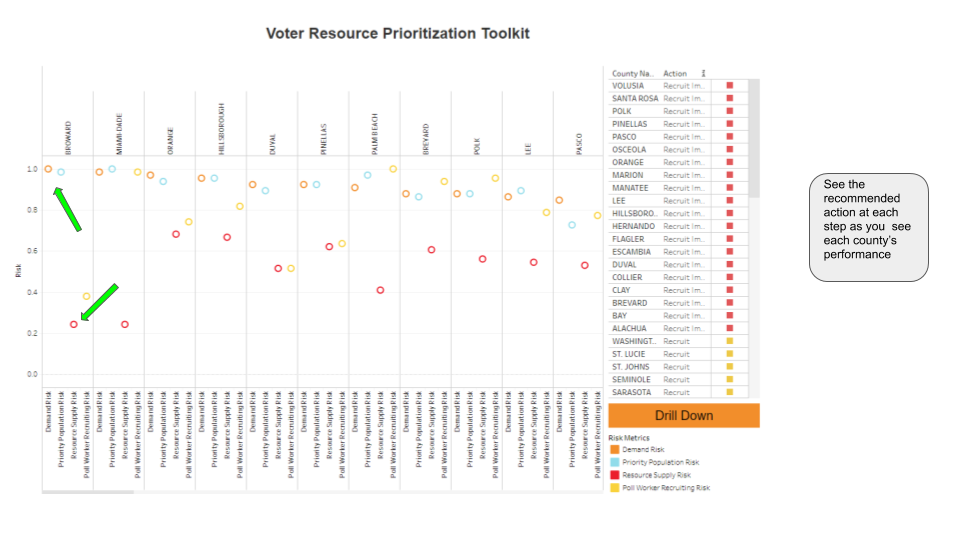

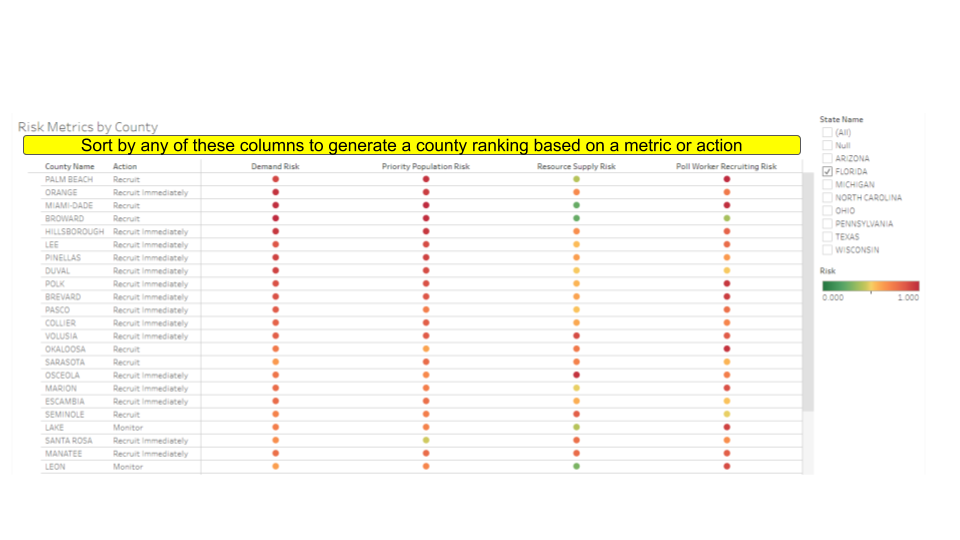
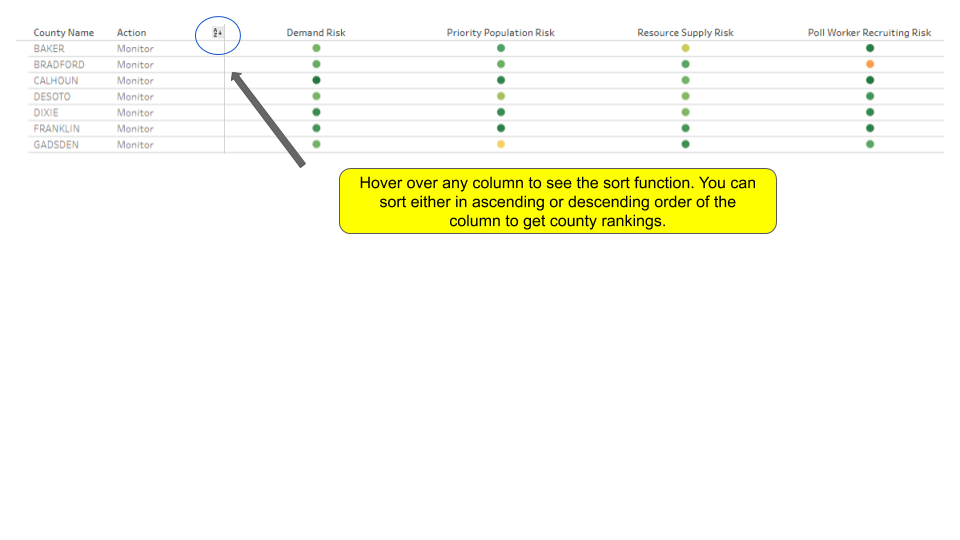
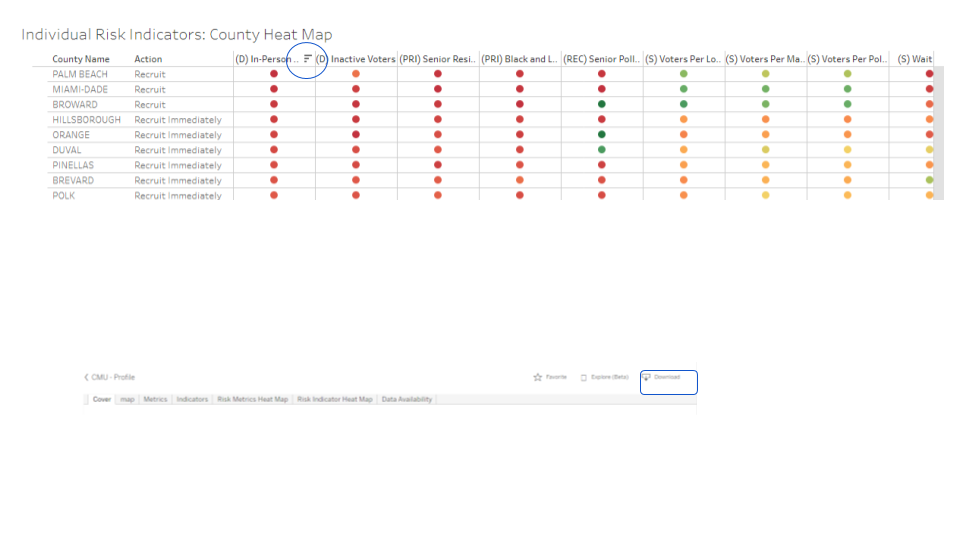
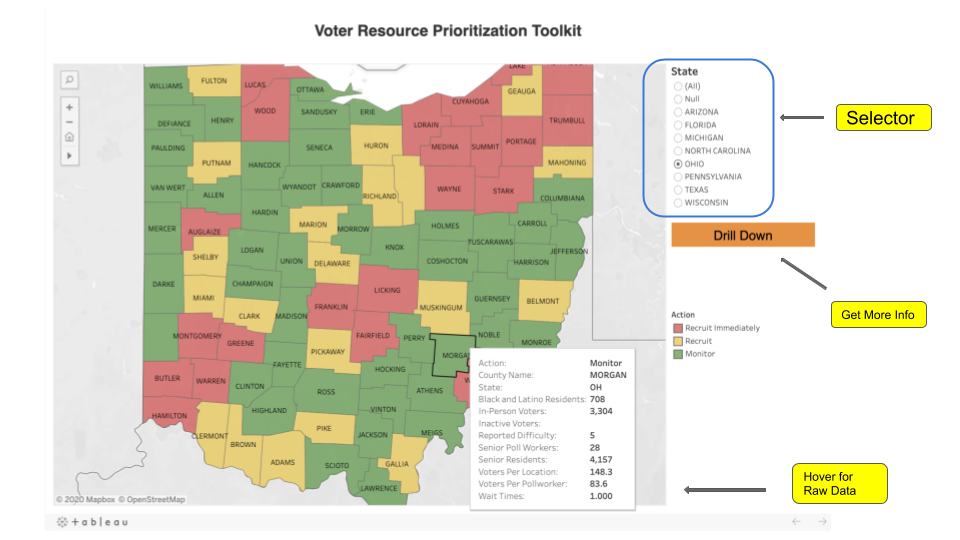
| Data Source | Description | Year | Data |
|---|---|---|---|
| Election Administration and Voting Survey (EAVS) | Provides county-level election data about the resources, local characteristics, and infrastructure for U.S. elections. | 2016 | Link |
| The Cooperative Congressional Election Study (CCES) | Provides information about political attitudes and voter election experience | 2016 | Link |
| American Community Surveys (ACS) | Provides community characteristics of U.S. residents. | 2018 | Link |
| Metric | Indicator | Definition (County Level) | Data Sources |
|---|---|---|---|
| Demand Risk | In-Person Voters | Number of persons who vote in-person | EAVS |
| Inactive Voters | Number of inactive voters (who would need to go in person to reactivate their registration) | EAVS | |
| Resource Supply Risk | Voters per Location | Number of voters per polling location | EAVS |
| Voters per Machine | Number of voters per voting machine | EAVS | |
| Voters per Poll-worker | Number of voters assigned per poll-worker | EAVS | |
| Wait Times | Time waited to cast the vote | CCES Survey Data | |
| Priority Population Risk | Black and Latino Population | Number of Black and Latino voters | Census |
| Senior Citizens | Number of senior citizen voters (60+) | Census | |
| Poll Worker Recruiting Risk | Recruiting Difficulty | Difficulty in Recruiting (1 to 5) | EAVS |
| Senior Poll Workers | Number of Poll-workers who were seniors (60+) | EAVS |

Kaila Gilbert Carnegie Mellon University

Hemank Lamba Carnegie Mellon University

Jessica Toth Carnegie Mellon University

Bob LaRocca Voter Protection Corps

Rayid Ghani Carnegie Mellon University

Quentin Palfrey Voter Protection Corps